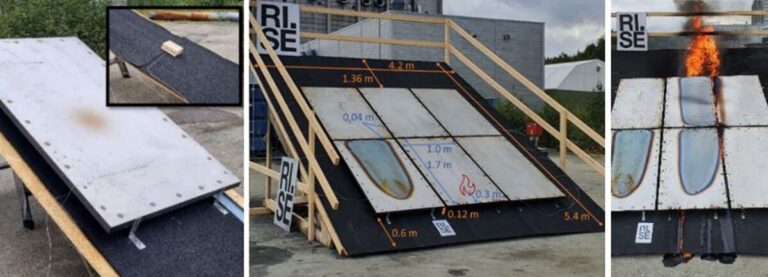An international research team has observed how fire spreads in PV systems installed on flat roofs and discovered that a certain amount of energy is required for a fire to start and spread in the cavity under the solar panels .
A Slovenian-Norwegian research group has investigated how fire can spread in flat roof PV systems and found that the gap distance between the panels and the roofs, as well as the size of the ignition source, are key factors.
“Our work builds on previous knowledge from experiments at Underwriters Laboratories (UL) more than a decade ago,” said the study’s lead author. n, told pv magazine. “The main difference from their work is that we placed the ignition source under the PV modules to represent a fire caused by an electrical fault in the PV installation. The UL experiments studied larger external fires spreading to the PV on sloped roofs.”
The research group showed that a certain amount of energy is required for a fire to start and spread in the cavity under a PV installation. “This means that if the energy is released during an electrical fault and as a result of the ignition of nearby materials, the fire will not propagate.” n went on to say. “The amount of energy required depends on the geometry, such as the cavity distance, but also on the materials in the cavity.”
The researchers varied the distance between the holes, but used the same slope and materials in all tests at different scales. In the experimental setting they used PV modules made of steel, without cabling or other material being placed in the cavity, and a bituminous roof membrane over a substrate of wood chipboard with a slope of 30 degrees. “Other structures will certainly require a different minimum initiating energy to start a propagating fire,” n specified.
With the available fuel load, the burning time per roof section was limited to approximately 20 minutes. According to the research team, the roof construction with a 22 mm chipboard had sufficient fire resistance to prevent fire from spreading to the attic. “This shows that a very robust construction is not needed to keep the fire outside the building.” n said. “However, with more fuel in the structure, the fire duration and fire resistance should be longer.”
The scientists also observed another mechanism of fire spread via molten and burning bitumen. “Compared to previous research on flat roofs, we saw the same kind of effects with the cavity distance,” n added. “The main difference would be that with the sloping roof we experienced much faster flame spread, because the plume was driven up the roof slope by the buoyancy. In the experiments with flat roofs, the fire spread in all directions and was more influenced by the wind.”
Their findings are available in the study “Experimental research into fire propagation on a sloping roof with photovoltaic solar energy used in construction”, published in the Journal of Physics. The research group consisted of academics from Norway’s RISE Fire Research AS and the Slovenian National Institute of Construction and Civil Engineering (ZAG).
The latter recently conducted a series of tests to assess the fire safety parameters of vertical rooftop PV systems and discovered that these installations offer better parameters compared to conventional roof arrays. The former conducted a series of experiments showing that the distance between solar panels and roof surfaces could be a crucial factor in fires in PV systems..
This content is copyrighted and may not be reused. If you would like to collaborate with us and reuse some of our content, please contact: editors@pv-magazine.com.


